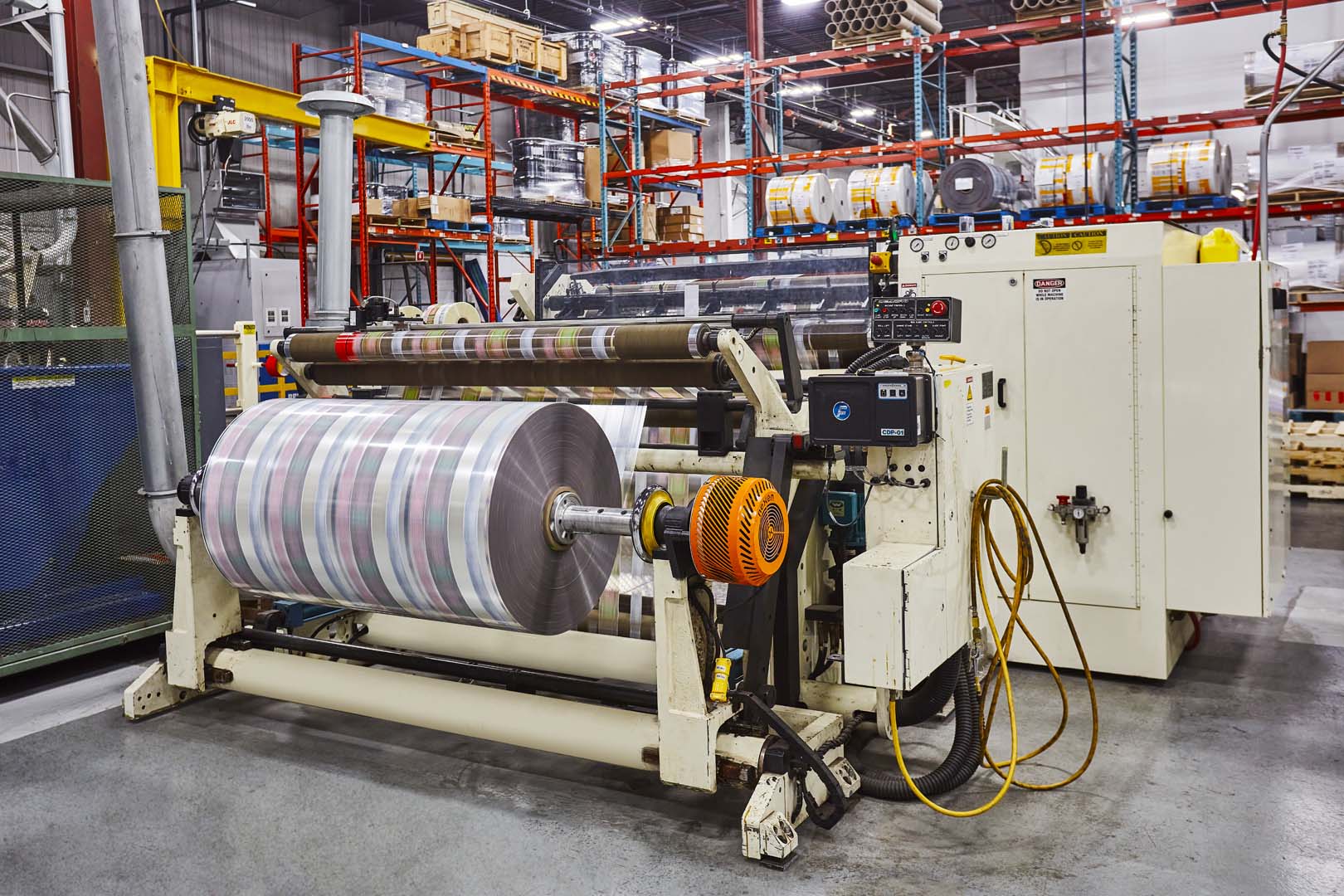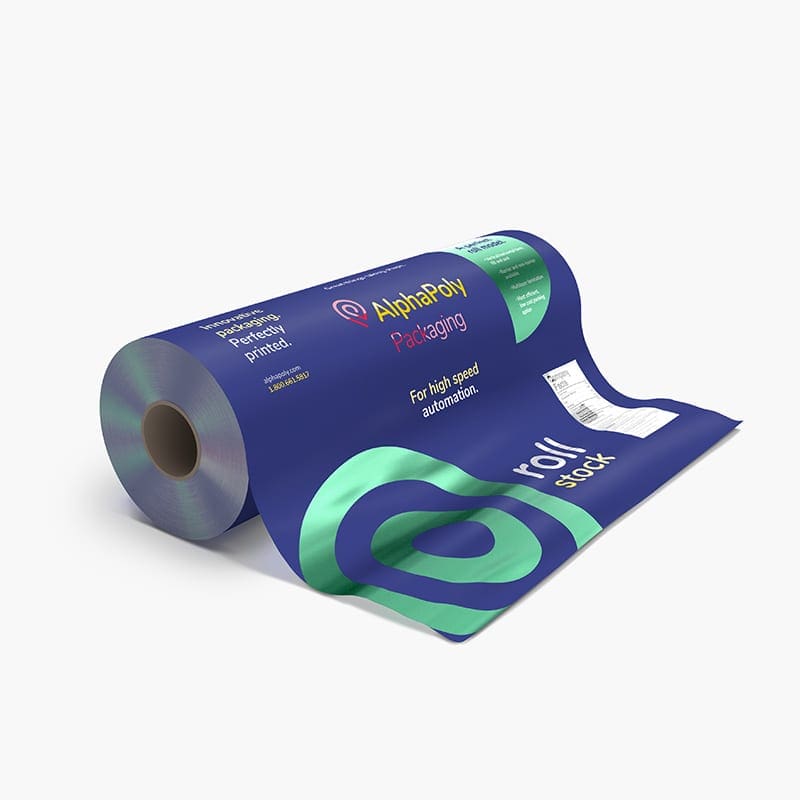
Convert large master rolls into smaller rolls for use on form fill and seal machines.
Premium Rewinding Technology
Certain materials, such as light gauge films and complex laminate materials, require specialized rewinding techniques to ensure that the finished rolls are of the desired quality. Rewind technology, such as roll lock differential air shafts and closed-loop rewind tension control, enables AlphaPoly to provide you with high-quality finished rolls.
AlphaPoly’s Slitting Rewinding Machine
- Rewind technology: roll lock differential air shafts and servo-actuated lay-on roller systems
- Modes: "minimum gap" for adhesive materials, narrow width option for narrow web rewind
- Closed-loop rewind tension control: optimum control for tension-sensitive materials
- Load cells: to adjust torque to rewind shafts automatically
- Auto roll lock differential air shafts: ideal for tension-sensitive materials, no spacers needed
FAQs
Here’s some commonly asked questions about slitting and rewinding.
Roll slitting is a process used to cut large rolls of material into narrower widths. The large roll of material is unwound and passed through a slitting machine where blades cut it into smaller sections. These smaller sections are then rewound (using a machine called a rewinder) onto individual cores, creating multiple narrower rolls from a single large roll.
Roll slitting offers several advantages over other cutting methods. It allows for high quality, high-speed and precision cutting of a variety of materials, such as paper, film, and foil. Additionally, roll slitting provides tight tolerance control, minimal material waste, and efficient production processes. We can also account for the various thickness of the material.
We love our slitting terminology around here. In more simple terms, we have a fancy way to roll up materials so that they end up smooth and without any wrinkles, which is really important for thin or layered materials. In short, our technology is really good at taking a big roll of material and making it into smaller rolls that are perfect for use in packaging and other processes, especially for materials that need extra care to avoid damage.
– It uses special air shafts and rollers to help wind the material up neatly.
– It has different settings for different types of materials. For example, if the material is sticky, the machine adjusts how it handles it.
– The machine can control how tight or loose the roll is, which is important for materials that can get damaged if they’re wound too tight or too loose.
– It automatically adjusts the force used to wind the rolls, making sure they are just right.
– It’s good for delicate materials and doesn’t need extra parts to handle them.






